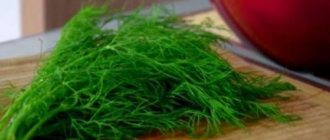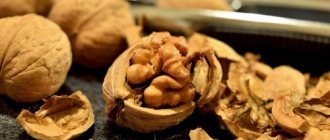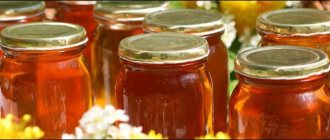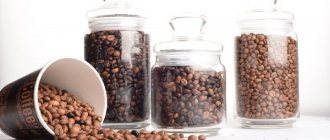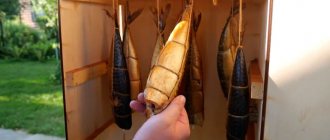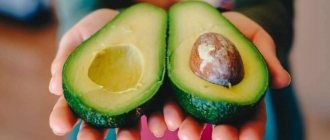Almonds are a popular nut with a pleasant taste and light aroma. It contains many useful substances, valuable fats and is widely used in cooking. It is eaten without pre-processing and used as an addition to salads, main courses and desserts. They even make flour from it, which is an excellent substitute for wheat.
Almonds are not cheap, so it is important to know how to store them at home in peeled and unpeeled form so that they do not spoil ahead of time.
Almond selection
To ensure that your almonds have the longest possible shelf life, it is important to make the right choice when purchasing nuts. Pay attention to the following parameters:
- Shape and size. The nuts should have the correct drop-shaped shape, which resembles sunflower seeds. It is important that all nuts are the same size. This suggests that they were collected at the same time.
- Appearance. The color should be uniform, without rust, mold or other spots or holes that indicate insect damage.
- Smell. A light, specific almond aroma indicates the freshness of the product. A bitter, rancid smell is a sign of spoilage.
- Humidity. The almonds should be dry, but not dry. It is important that the kernels are not damp. This is checked by biting a nut. If it is too hard but not crispy, it is too dry. If it is soft and stringy, it means the product is damp.
- The shell. It should be hard, uniform in color, without stains, chips or other damage.
Nuts in the shell have a longer shelf life. Therefore, this type of almond is chosen for long-term storage.
Advice! Loose almonds are cheaper than already packaged products, and it is easier to check their quality.
Criteria for selecting suitable fruits
Making the right choice when purchasing almonds intended for long-term storage will significantly reduce the risk of premature spoilage. When making a purchase, the owner should pay attention to:
- Walnut shape. It should be correct, even, without any dents or bulges.
- Uniform color, on the surface of which there should be no mold, rust stains, darkening, or traces of any other damage to the product.
- Smell : high-quality almonds are not too bright, without notes of bitterness or acidity. Any other “impurities” in the aroma are a signal of possible spoilage of the product.
- The integrity of the shell of unshelled nuts: any chip, crack or other defect casts doubt on the quality of the product.
Preparation for storage
Almonds do not require special preparation for storage. All you need to do is go through them, eliminating all damaged and low-quality specimens, as well as foreign impurities.
Despite the fact that shelled almonds are stored longer, some housewives prefer to clear part of their stock in advance. After all, it is in this form that the product is easier to use for cooking.
The hard shell is opened using a nut cracker or a small hammer. It is important to use the tool carefully so as not to damage the core.
You can peel the brown film from almonds in different ways. One option is to pour boiling water over the nuts. After this, the film will easily separate from the core.
Raw almonds last longer than roasted almonds. Some housewives still dry it.
Advice! Almonds are dried in an electric dryer, microwave, frying pan, oven or in the fresh air in a natural way. The latter option allows you to save more nutrients.
How to peel a coconut
Sometimes you want to pamper yourself with something exotic and mentally go to distant islands, where there is summer, sun, palm trees and white sand. Coconut will help you feel like the hero of an advertisement for a Bounty bar. But how difficult it is to get to its contents!
Cracking a coconut seems difficult only at first glance. You will need a sharp knife with a narrow blade or a regular screwdriver, a hammer and a little of your time.
First, a liquid is “extracted” from the inside, which is often called coconut milk. They do this as follows:
- First, find the “eyes” on the nut. There are only three of them - two small and one slightly larger.
- Using a knife or screwdriver, punch a hole in the largest “eye” (it is softer than the others).
- Then turn the nut over the container and pour out the liquid.
You can drink coconut milk straight from the nut through a straw!
How to split a coconut into two halves:
- Take a coconut in one hand and a hammer in the other.
- Start tapping the nut in a circle (draw a line down the middle of the coconut with a knife).
- Knock until cracks appear.
- Divide the nut in two with your hands.
- Remove the pulp using a knife.
Instead of a hammer, you can use a large kitchen knife. The blows are applied with the blunt side of the blade. Then they take out the pulp with the same knife, making cuts in it and moving the blade away from the hard shell.
The coconut can be broken into two parts using a kitchen knife.
Storing Unshelled Nuts
Almonds in the shell last the longest. The hard shell protects the core from negative environmental factors, bacteria and insects, and prevents it from oxidizing in the air. It is recommended to purchase it for long-term storage in an apartment.
Before storing fresh almonds in shell, it is important to create optimal conditions for them. The room should be dry. It is advisable that the place be cool. A pantry or cabinet under the windowsill is best. If there are no such premises, nuts are stored as far as possible from the stove.
Containers for shelled almonds must allow air to pass through. Otherwise, the product will become damp. Housewives use cardboard and wooden boxes, fabric bags, and paper bags. Polyethylene and hermetically sealed plastic or glass containers are not suitable.
The place where almonds are stored should be protected from direct sunlight. Ultraviolet radiation destroys some compounds in the product, making it less useful.
Do not allow moisture to get into the container with nuts. This will cause mold and premature spoilage of the product.
This is interesting:
A selection of the best varieties of cabbage for pickling and storing for the winter
The benefits and harms of orange peels, rules for their preparation, storage and use
Basic rules and packaging
Before purchasing a nut, you need to understand the main rules for storing it. It is no secret that the surface of nuts is covered with a shell, which protects them from damage and other external influences. Because of this, many people believe that almonds are suitable for storage in any conditions, but this is far from the case.
There are several recommendations that you should familiarize yourself with in advance:
- Maintaining optimal temperature. When storing any variety of nuts, you need to monitor temperature indicators. It is recommended to maintain the air temperature at 10-15 degrees. Almonds cannot be stored at temperatures above 17-20 degrees, as in such conditions they will quickly deteriorate.
- Lighting adjustment. Nuts are best stored in shaded areas. They should not be exposed to sunlight, as this reduces their shelf life.
- Maintaining air humidity. The fruit does not store well in high humidity. Therefore, the air humidity level should not be higher than 70-80%.
The following are used as storage containers:
- clay pots;
- glass jars;
- wooden boxes.
Some people use plastic bags, but it is better not to store almonds in them for a long time, as they begin to rot.
Storing Shelled Almonds
It is recommended to store peeled young almonds in a brown shell (film). Clean it immediately before use. It also protects the product from oxidation, extending its shelf life.
There are several ways to store peeled almond kernels. Each of them has its own nuances.
At room temperature
Young almonds have the shortest shelf life at room temperature. It quickly becomes saturated with moisture, acquires a rancid taste and loses its aroma.
To minimize environmental impact and extend the shelf life of the product, it is placed in the pantry or on the bottom shelf of the kitchen unit.
Kernels are stored longest in vacuum packaging. Often nuts are sold in this form. There are special forms, as well as vacuum sealers for independent use at home.
If you bought almonds by weight and there is no way to vacuum them at home, the nuts are placed in a clean, dry jar, which is hermetically sealed. It is not recommended to put almonds in metal cans, which accelerate their oxidation.
In a refrigerator
Almonds are best stored in the refrigerator. There the temperature is low, which allows you to extend the shelf life.
There are other products in the refrigerator compartment. If stored improperly, their odors mix, which negatively affects the taste. To prevent this from happening, the almonds are placed in the vegetable drawer. It is pre-packed in a plastic bag or plastic tray. Unpeeled vegetables and fruits are placed nearby, but not garlic and onions.
Water often accumulates in vegetable drawers. It is important to protect the nuts from liquids. If moisture does penetrate under the packaging, the almond kernels will have to be eaten within 1-2 days. Otherwise, they will become unfit for consumption.
Note! Almonds should not be stored in the refrigerator if condensation runs down its walls and ends up in the vegetable drawers.
If for some reason storing nuts in the refrigerator is impossible, in winter they are placed on a glazed balcony. They will stay there no less.
In the freezer
Nuts last the longest in the freezer. At the same time, they do not lose their beneficial properties. Their taste also does not change significantly.
Almond kernels are placed in a bag or plastic tray and placed in the freezer. It is advisable that nuts, meat and fish are on different shelves.
Important! If almonds have been thawed, they cannot be re-frozen.
What else can you do?
Other ways to process almonds besides washing:
- boil for several minutes;
- Blanching: placing in boiling water for a short period of time;
- Soaking in water at room temperature for several hours.
Temperature treatment makes it possible to clean almonds as much as possible from contaminants and pathogens, as well as chemicals that are used to treat raw materials before sale.
Almond kernels have a brownish tint, making it difficult to notice dirt on its surface.
Important!
Even if the product looks absolutely clean, it must be washed - small particles of dust and pathogens are not visible to the human eye.
Dirty nuts can cause:
- poisoning;
- eating disorder;
- infection with a parasitic infection.
Washing kernels not only ensures their complete safety, but also extends the shelf life of the product at home.
Storing Green Almonds
Green almonds are rarely found on store shelves. If you managed to purchase this healthy and tasty product, it is important to ensure proper storage.
Typically, young green almonds are stored in the refrigerator, preferably in vacuum packaging. If this is not possible, the almonds are placed in a hermetically sealed plastic container or plastic bag. Store the product in vegetable boxes.
Some housewives freeze green almonds. It is pre-packed in a plastic bag or vacuum.
Important! There should not be a drop of liquid on the green nut shell. Otherwise, the product will begin to mold and rot.
Optimal storage conditions
Optimal storage conditions depend on whether the almonds were purchased in shell or without. The list shows the main indicators:
- Humidity. The maximum humidity for shelled and unshelled nuts is 75%. If the indicators are higher, the nuts will become moldy and acquire a rancid smell.
- Temperature. For inshell nuts, the optimal values are +16…+18°C. Temperatures suitable for peeled kernels are +4…+10°C.
- Lighting. Almonds are stored in a dry, dark place. The sun's rays destroy some of the beneficial substances in the product.
Best before date
How long almonds can be stored depends on their type and storage method:
- peeled kernels in the refrigerator - six months;
- the product remains in the freezer without changing its taste or chemical composition for up to a year;
- at room temperature, kernels without shells are stored for no more than 2 months;
- Unshelled almonds, if stored properly, will not spoil for 12 months.
Spoiled almonds have a rancid odor and unpleasant taste. Over time, the beneficial substances in it are destroyed. Eating spoiled food is dangerous to health.
Note! When purchasing packaged almonds, be guided by the expiration dates indicated by the manufacturer.
Tips for storing almonds at home
To keep almonds longer, several nuances are taken into account:
- After opening the vacuum packaging, the kernels are transferred to a clean, dry container - a glass jar or plastic food tray. The container must be sealed tightly.
- Almond petals, as well as crushed kernels, have a shorter shelf life than whole nuts. Their shelf life is 2-4 weeks.
- Different nuts have different tastes and aroma. Moreover, they all contain a large amount of oil. If you store them together, the flavors will mix, so keep almonds separate from other nuts.
- Cleaned kernels should not be allowed to come into contact with other products, especially spices. Otherwise, they will become saturated with foreign aromas.
Subtleties of growing a plant
There are many features and nuances of how to grow almonds. Culture needs proper selection and preparation of the site
It is also important to take into account that for pollination it is necessary to plant other varieties nearby and attract pollinating insects to the site
What time to plant
It is preferable to plant the crop in the country in mid-autumn, after all the leaves have fallen. When planted in spring, the tree takes root worse. You should wait until the threat of frost has completely passed.
Location
To obtain a high-quality harvest, a number of conditions must be met:
- For planting, choose the warmest and brightest place on the site, protected from draft winds.
- The minimum distance from other fruit trees is 160 cm.
- Planting in low-lying areas should be avoided.
- Groundwater should not pass too close to the site. If they flow at a depth of 155 cm or closer, then it is better to choose another area.
The soil
The tree does not make any special demands on the composition of the soil; it can grow in sand, on stones and rubble. The best results will be obtained when growing the crop in fertile, light, loose soil rich in calcium. Sandy loam or loamy composition works well.
The roots do not tolerate the presence of nearby groundwater, high acidity, chlorine and salt content. The soil must have good air and water permeability.
Selection of planting material
When choosing a seedling, you should always study the characteristics of the variety; you should definitely check with the seller whether the plant is adapted to the weather conditions of the region. You need to buy seedlings only from a trusted seller:
- The trunk should be strong with a glossy bark without cracks or abrasions.
- The buds on the branches are large, without damage.
- There should be no dry shoots or growths on the roots.
- Dark areas on the foliage or bark indicate overcooling of the crop.
Planting process
Vegetable growers are interested in the question of how to plant almonds. Seedlings are planted on the site at intervals of 2.5 meters. For the procedure to proceed without errors, you need to perform a series of sequential actions as follows:
in the selected area, dig a hole 52 cm deep; arrange a drainage layer; then add a layer of sand; add nutritional components; carefully plant the tree, straightening the root branches; the hole is covered with earth so that the root collar protrudes by 13 cm; install a support for tying; water generously with warm water.
At the last stage, it is recommended to mulch the root zone with peat, straw, and sawdust.

